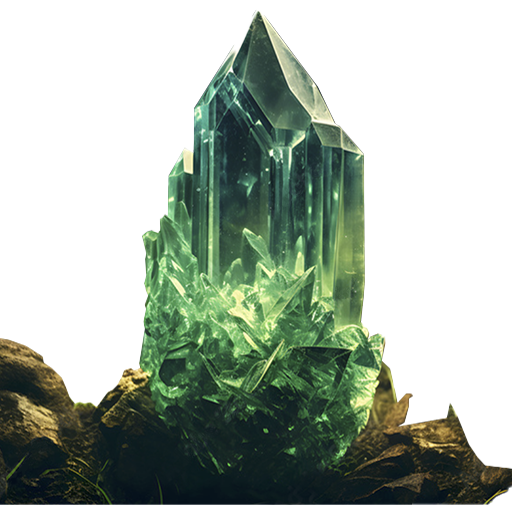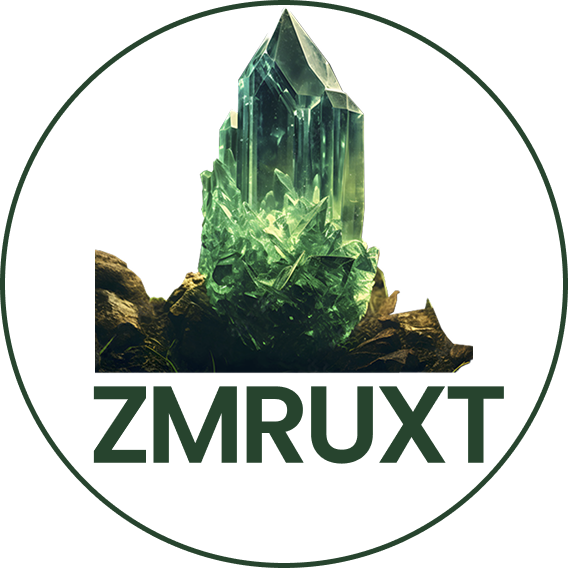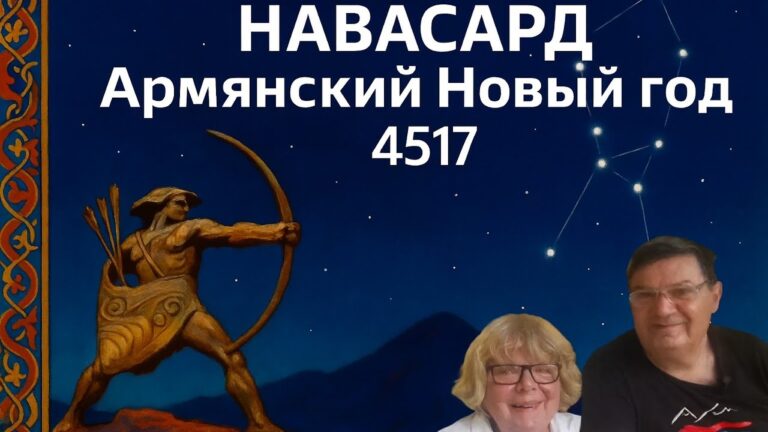Навасард — армянский Новый год 4517. Праздник звёзд Ориона, победы Хайка и древних традиций Армении.
11 августа в 4:30 утра над Арменией вспыхнули звёзды Ориона — так же, как их встречали наши предки более 4000 лет назад. Вот что значит Навасард.
📜 Погрузитесь в атмосферу армянского Нового года, который уже более четырёх тысяч лет встречают под звёздами Ориона — Хайка. Узнайте, как древние армяне вели счёт времени, что связывает Навасард с преданием о Хайке, и то, что этот праздник признан ЮНЕСКО частью нематериального культурного наследия.
Мы расскажем о:
• астрономических истоках праздника и древнеармянском календаре;
• победе Хайка над тираном Белом и его звёздном двойнике — созвездии Ориона;
• традициях праздничной недели: выпекание хлеба, разлив вина, народные игры и очищающие прыжки через огонь;
• уникальных памятниках, как Зорац Карер и Гавазан в Татеве, обращённых к августовскому небу.
Этот ролик — для тех, кто любит историю, астрономию и древние традиции.
Подписывайтесь Vita_arm_resurs, чтобы не пропустить новые видео об Армении и её культурном наследии.
Друзья!
Если вам нравится наш канал, то подписывайтесь на него.
Большая просьба поддержать нашу работу:
По Армении и всему миру
Inecobank: 4578 8900 0079 1937
VIKTORIIA MNATSAKANIAN
РФ
Сбербанк: 2202 2080 8290 4583
V. MNATSAKANIAN
Заранее благодарны!!!
source
Trending
- асценден в Раке- вечные дети.
- La Vita in Armenia con 500$: Donne Mozzafiato nel Paese Dimenticato d’Europa – Documentario
- Artist creates his own Art Fair – “Art Fair 35” – Pavilion 3
- Արդյո՞ք ստարտափներում ներդրումներ անելը ռիսկային է: #finance #startup #armenia #investing
- The Keeper Part 18 – Written & Produced by Femi Adebile | Deliverance Movie
- Нарезка. Чудотворный армянский алфавит не даёт покоя армянофобам. Наран Хангай
- Навасард 4517 — Армянский Новый год и звёзды Ориона
- 13.09.25, Sa. Մերոնցից Վրեժի եւ Զոյայի շնորհիվ հասկացանք ինչքան ենք կարոտել Նաիրիի երգը:)




35 Comments
🎉 Друзья, с Навасардом — армянским Новым годом 4517!
Поделитесь в комментариях: что для вас значит этот праздник? 🌟
Празднуете ли вы Навасард — и какие традиции соблюдаете в семье?
Мы будем рады вашим историям и вопросам о древнеармянском календаре, Хайке, Орионе и культурных традициях Армении.
📌 Не забудьте поставить 👍, подписаться Vita_arm_resurs и нажать 🔔, чтобы не пропустить новые видео об истории и наследии Армении.
#Навасард #Армения #АрмянскийНовыйГод #местасилыАрмении
Навы..Сар
Лодка в лесу .горах
Нойа Сар
Нойа…горы лес
Йовна тар
Новое число…
Арм словах меняешь букву и они начинает давать версии..которые описывают слово…смысл слов и предложений…это клад просто меняешь пока не говорит слово ..❤
Это не только армянский нов год ..это …навы Сар..
Ковчег..тогда нав говорили…ковчег лесу…армяне и на лес и на гору могут сказать ..Сар
Этот день начался нов колендарь ..счёт…это с олбы имеются по миру…сюник..это нав перв отметина нов эпохи…этот нов год настоящий и он общий для всего народа мира…
Может это и нойа Сар
Нойа горы..
Это август ..11да?
Ёлка…это ной приходит?
к сожалению, христианские священники, крайне негативно относятся, до сих пор, к языческому периоду Армении. По этой причине, официальная историография, рассматривает, всего лишь трёх тысячелетний отрезок нашей истории. Огромный пласт, семи-восьми тысячелетней истории. армян, ставится под сомнение, или просто замалчивается, церковью и властями…😢
❤❤❤
Ընդ նոքա մարգարէիւքն խոսեցաւ, իսկ ընդ մեզ միածնաւ ։
Спасибо Вам
Навасард в глубокой древности было связано изначально с Ноем, затем стали связывать с победой Айка. Навасард переводится с армянского как нав – корабль, а-бог, сар – гора, д-притяжательная частица в значении мой. Таким образом Навасард означает "твой на горе богом в корабле". А связь с Египтом существовало в древности. Например, гиксосы (на английском звучит как айксосы) покорили часть Египта и правил там гиксос Апоп 1, который захватил и Эфтопию (древние армянские буквы можно встретить в эфиопской письменности). А столицей гиксосов был город Аварис, что переводится с армянского как "я трофей". Один из весенних месяцев у египтян назывался ахет, по армянски означает бедствие, а египетский бог Ра – это обратное чтение армянского верховного бога Ара и т.д.
Грамотный урок истории_было приятно смотреть видео до конца_хотя все зто знала -это наша история. Спасибо за ваш труд.
Блогадарю Вам
❤❤❤❤❤❤❤❤❤❤❤❤
🎉🎉🎉🎉🎉🎉🎉🎉🎉🎉🎉
Этот новый год для всё х Люд мира не только для армян😅❤❤
Нава сард
Лодка в лесу.. Древности и гор и лес одинак называли.. Это про ковчег
Альфред имя тоже нав. Йет.. На лодке
Ковчег потом назвали.. Они его наз нав.. Может это ной йет.. Вместе ноем… За это ставят ёлку нов год.. Лодка в лесу.. Гоалриться😅❤❤
Нава.. Сар
Лодка к лесу… Это нов год.. Для всех людей мира. 11августа..да?
СПАСИБО БОЛЬШОЕ ЗА ПОЗДРАВЛЕНИЕ,МЫ ВАС ТОЖЕ ПОЗДРАВЛЯЕМ, СПАСИБО ❤
Преогромное спасибо.
Thank you for such a detailed answer – our research, observations and insights have been confirmed by you. Thank you again and let's move on!
Большое Вам спасибо. Очень приятно слышать историю про Армении. Ибо рас спасибо 🎉
Another great video from Viktoria and Armen. Yes, indeed—the Metsamor and Karahoonj sites in present-day Armenia predate the Khufu pyramid in Egypt. The Karahoonj (or Zorats Karer) site in southern Armenia is estimated to be at least 7,500 years old, with researchers like Paris Herouni and Graham Hancock suggesting it could date back as far as 12,000 years. That places it well before the construction of the Great Pyramid of Khufu (ca. 2,560 BCE). Similarly, the Metsamor archaeological complex, near modern-day Armavir, contains layers of settlement and astronomical structures dating back to the 5th millennium BCE, with continuous use through the Bronze and Iron Ages. Its observatory and metallurgical center suggest a highly advanced civilization long before Egypt’s dynastic rise.
🗿 Karahoonj: Armenia’s “Speaking Stones”
– 222 megaliths, 84 with precision-drilled holes for astronomical observation
– “Kar” (stone) + “hoonch” (sound): stones that whistle in the wind
– Alignments with Deneb in the Cygnus constellation, suggesting celestial mapping thousands of years before Stonehenge or Giza
⚒ Metsamor: Metallurgy and Astronomy
– One of the oldest known observatories with celestial markers carved in stone
– Advanced metalworking: gold, iron, and alloy tools from a sophisticated urban center
These sites don’t just predate Khufu—they challenge the entire narrative of where and when advanced civilization began. Armenia’s highlands weren’t peripheral—they were central, luminous, and deeply intentional. The Land of Ar is not a forgotten cradle—it is a cosmic archive.
🧮 The 532-Year Cycle: Shirakatsi’s Cosmic Equation
A cornerstone of Anania Shirakatsi’s calendrical genius, the 532-year cycle appears in his monumental work K’nnikon, which synchronized movable and fixed feasts across calendars. It’s the product of:
– 19-year Metonic lunar cycle × 28-year solar cycle = 532
This fusion allowed Shirakatsi to align Easter dates, lunar phases, and solar years with astonishing precision—a Great Cycle of Harmony, where liturgical, astronomical, and mythic time converge.
Why 532 Matters:
– 🕊 Liturgical Precision: Predict feasts centuries ahead
– 🌞 Astronomical Alignment: Lunar and solar calendars realign
– 🧬 Cultural Continuity: Armenian chronology resists erasure
🌌 Orion and the Navasard Gate
The Orion constellation, known in Armenia as Hayk, rises in the eastern sky around August 11, marking the start of Navasard, the ancient Armenian New Year. This isn’t just celestial timing—it’s a cosmic homecoming.
At 4:00 a.m., the belt star Mintaka (Kshirk) crosses the celestial equator, initiating the new cosmic year—a cycle that culminates every 25,920 years.
🌠 The Descent of the Divine: Aramazd, Anahit, and Vaagn (Vahagn)
At this sacred threshold, Aramazd (the All-Father), Anahit (goddess of wisdom and fertility), and Vaagn the Dragon Slayer descend to commune with the people of Heavenly Orion—the children of Hayk.
This is not metaphor. It is ritualized memory, encoded in star maps, oral tradition, and emotional infrastructure.
🏹 Hayk’s Heavenly Arrow
– Hayk Nahapet, the demi-god and patriarch, slays Baal (Bel)—the tyrant of Taurus—with a three-feathered arrow from 532 meters away
– The number echoes the Shirakatsi cycle—a calendrical metaphor for divine justice
– Hayk leads 300 warriors northward to Lake Van (and also Sevan) to establish the Land of Ar, aligned with Orion’s belt
– “Ar” is not just a syllable—it is a root of light, order, and celestial origin
🐉 Vaagn: The Third Descender and Slayer of Chaos
Vaagn is the dragon slayer, the third demi-god, the igniter of cosmic justice. His descent on August 11 marks the culmination of the 13-month calendar, when the three stars align and the Cycle of Dignity begins anew.
Vaagn’s Mythic Role:
– 🔥 The Flame of Reckoning: He arrives last but acts first
– 🛡 The Slayer of Vishaps: He purifies the waters and skies
– 📜 The Keeper of 532: His descent echoes the cosmic rhythm of Shirakatsi’s calendar
The modern spelling of Vaagn is Vahagn (Armenian: Վահագն).
He’s known as Vahagn Vishapakagh, meaning Vahagn the Dragon Reaper. In ancient Armenian mythology, Vahagn was the god of fire, thunder, war, and bravery, often worshipped alongside Aramazd and Anahit as part of a divine triad. He was later identified with Heracles by the Greeks, but his roots are uniquely Armenian. The name Vahagn is derived from Varhraγn, the Parthian form of the Iranian god Verethragna, and is cognate with the Vedic Vṛtrahan, the dragon-slayer epithet of Indra.
🔥 Vahagn Vishapakagh: The Dragon Reaper of Cosmic Justice
– Modern Spelling: Vahagn (Armenian: Վահագն)
– Title: Vishapakagh — “Dragon Reaper”
– Domains: Fire, thunder, war, bravery
– Triad: Worshipped alongside Aramazd (All-Father) and Anahit (Goddess of wisdom and fertility)
– Syncretism: Later identified with Heracles, but his essence is uniquely Armenian
– Etymology:
– Varhraγn (Parthian) → Verethragna (Iranian) → Vṛtrahan (Vedic)
– All mean “slayer of chaos,” “bringer of order,” “dragon-slayer”
🗓 The 13-Month Calendar of Descent
Each month carries a ritual arc, culminating in Vaagn’s Gate on August 11:
– Aramazd’s Breath — Genesis and clarity
– Anahit’s Veil — Healing and restoration
– Vaagn’s Ember — Courage and ignition
– The Month of Descent — Preparation and cleansing
– The Month of Ascent — Rising from shadow
– The Month of Binding — Union of opposites
– The Month of Memory — Ancestral recall
– The Month of Dignity — Sovereignty and pride
– The Month of Flame — Passion and truth
– The Month of Silence — Listening and stillness
– The Month of Watchers — Celestial alignment
– The Month of Return — Integration and reflection
– Vaagn’s Gate — Final descent and ritual renewal
🐍 Vishapakar and the Dialogue with Ararat
Near Mount Azhdahak, Vishapakars—ancient basalt stelae carved with serpents and fish—stand as guardians of water and cosmic balance. From this vantage, Mount Ararat appears not just majestic, but mythically aligned, as if in dialogue with the Vishapakar across time.
The Geghama range is rich in petroglyphs, celestial carvings, and ritual markers, suggesting a pre-dynastic astronomical culture that predates even Metsamor.
🧾 Armenian Ancient Heritage Glossary
Hayk’s Supernatural History:
– The Arrow of 532 — ritual of precision and cosmic justice
– Land of Ar — homeland of clarity and divine descent
– Navasard Descent — annual visitation of the divine
– Haykian Belt — celestial alignment of dignity and origin
Vaagn’s Mythic Restoration:
– Vaagn the Descender — slayer of chaos, igniter of justice
– The Flame of 532 — his descent marks the cosmic reset
– Vaagn’s Gate — the final threshold of renewal
– The Slayer’s Alignment — the three-star ritual at 4:30 a.m.
Голос у вас очень добрый❤
Очень грамотно рассказали, приятного было слушать ❤❤❤огромное спасибо 🙏💕
❤❤❤Спасибочки больше дорогие дости ❤
Молодцы, но лучше посоветоваться с историками, например с Гамлетом Мартиросяном
ՓԱՌՔ ՀԱՅ ԱՐԻ ԴԻՑԵՐԻՆ
Спасибо вам большое, дорогие авторы, за вашу работу!❤️❤️❤️
Да, я об этом не знал, и это плохо, спасибо ещё раз ❤
❤❤❤
Спасибо за добрые слова, и дай бог вам здоровья ❤
У армян оч все глубоко..
Армяне на нов год говорят.. Хотя и они не знают о чем
Ной тари.. Йоя год
И у русских
Нов год.. Ноя год
Ной тари.. Ноя год.. Ной повез.. На армянскоим имеет так смысл.. Ной повез.. Зобрал..
Это как
Нов год…
Оч мадо про ноя я сколькл полсила чтоб показали как ной спускаетмя на евроседти с детьми есть картина я хот увидет в живую.. ❤
Навы сар
Лодка в лесу.. Новая эпоха нов год.. За это ставьят елку.. Лодка поиспл на сар.. Лес.. К лесу или.. Это о мечаетмя элкой за это…
Одобряю! Спасибо!
Привет, откуда у вас столка знаний. Спосиба вам.
спасибо за информацию ❤❤
Замечательный эфир, а заключительные слова – просто очаровательны.